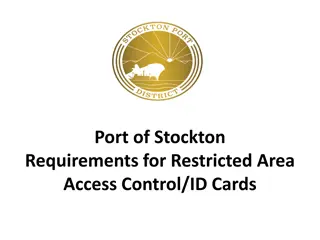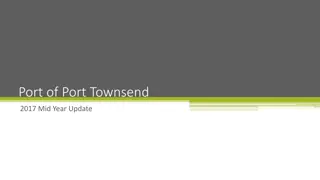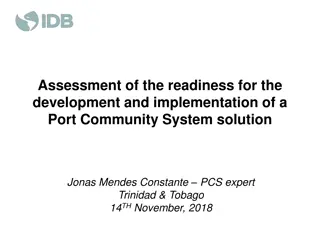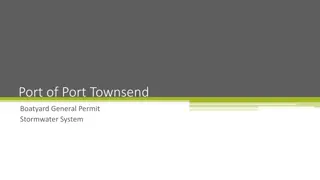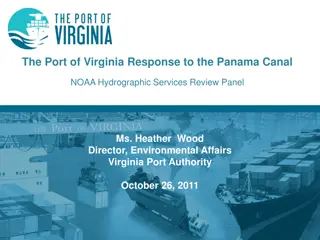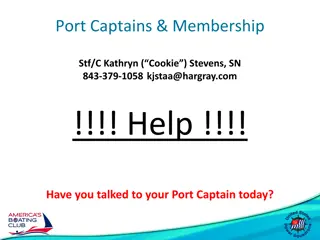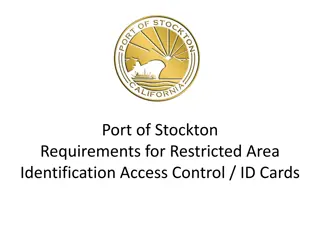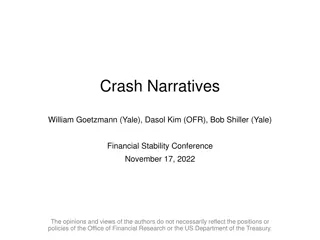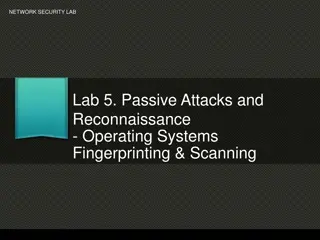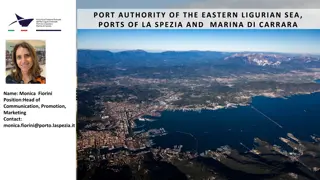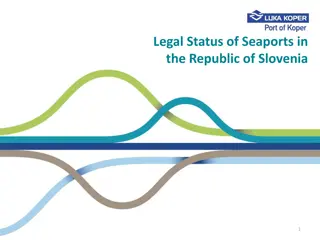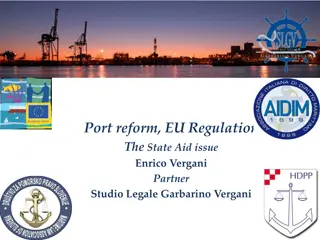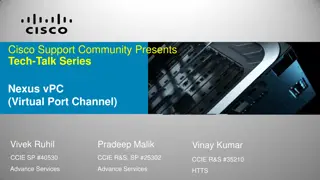Development of the Port of Poti by Strategic Investor
Exploration of the transformation and enhancement of Poti Sea Port by a strategic investor, APM Terminals, focusing on statistics, infrastructure improvements, present challenges, modern port requirements, and hinterland traffic forecasts. The analysis emphasizes the importance of overhauling the port to meet regional demands efficiently and sustain its significance in the post-crisis world.
Download Presentation

Please find below an Image/Link to download the presentation.
The content on the website is provided AS IS for your information and personal use only. It may not be sold, licensed, or shared on other websites without obtaining consent from the author. Download presentation by click this link. If you encounter any issues during the download, it is possible that the publisher has removed the file from their server.
E N D
Presentation Transcript
Development of the port of Poti by strategic investor in the post-crisis world by Andrii Kuzmenko Poti Sea Port Corp. an APM Terminals company
Statistics 000 tons 8,082 7,734 7,456 7,292 7,163 6,686 6,127 6,124 6,081 2004 2005 2006 2007 2008 2009 2010 2011 2012 Cargo composition (2011) Break bulk 10% Ro- Export 17% Ro&Ferry 11% Transit 46% Containers 27% Bulk 36% Import 37% Liquid 16% 3
APM Terminals acquired 80% of Poti Sea Port Corporation in May 2011 Water area 65.34 ha; Length of approach channel 1.6 km; Length of breakwater 1.8 km; Operating area 30.0 ha; Present capacity 9 million ton; After CAPEX capacity 16-19 million ton; Total length of berth s 2.9 km; Total length of railway - 17.0 km; Direct access to hinterland ways; 100 hectare of port development area. 250 ha of free industrial zone nearby. Abundant and skilled workforce 4
Present Poti: first look No depth inside (6-10 m) or on approach (12,5) No long berths (150-250 m max) No turning circle inside (max LOA 160 m) Capacity 8-9 mio mt PA with little reserves No land beyond the quaywall (60-150 m max)
Modern port requirements Regional port Present Poti International port Turning circle diameter, m 550 200 700 LOA at berths, m 230-270 170-200 310-330 Depth at berth, m 13,5 6,0-12,5 16,0 Depth at approach channel, m 14,5 12,5? 17,0 Land beyond quaywall, m 250-300 m 60-150 m 500 m Rail connection upto 30 mio 25 mio? upto 40-50 mio Road connection simplified restricted unrestricted Conclusions: 1. Within current boundaries, Poti risks to stagnate. 2. However, thanks to the rail capacity, Poti does have future 3. To remain the major regional port, complete port overhaul is needed, creating at least panamax capacity on the nautical and land-side.
Guesstimate of hinterland traffic forecast after 2020 Major commodities Volume, mio mt Relevant capacity Notes Crude oil 9,7 12,0 Export Oil products 1,5 2,0 In and out Containers 5,8 (1 mio TEU) 7,0 (1,2 mio) Domestic and transit Non-food bulk 4,2 5,0 Coal, ore, cement, fertilizers Food bulk 2,5 3,0 Grain, sugar, etc Gencargo 2,8 3,5 Including reefer cargo Rolling stock 0,6 0,8 Trucks, wagons and cars TOTAL 27,1 33,3 Conclusions: 1. Above volumes do justify development of specialized terminals. 2. Specialized terminals will allow for highest efficiency within limited area thus reducing the investments and payback period.
What would it take to handle? Liquid bulk Bulk Bulk food GC+roro+ cont Cont. Cold store Fertilizers Berth # D1 D2 D3 D4 D5 D6 10 12 Expected vessel DW, mt 150 000 80 000 60 000- 80 000 50 000- 60 000 60 000 80 000 15 60-70 Berth length, m 300 (see 1) 300 300 (see 2) 280 250 (see 3) 280 200 270 Capacity per berth, mio mt 8,0 4,5 2,3 2 3,2 5,0 0,2 1,5 Estimated terminal area, sq.ms (see 4) 130 000 170 000 153 000 112 000 95 000 16 800 (see 6) 52 100 Desirable terminal area sq.ms (see 5) 155 000 200 000 159 000 134 000 135 200 (see 7) 10 000 82 000 Required installed capacity 26,7 mio mt
Ideal Poti: how could it look ICT external access road ICT New approach channel -17 m +2000 m New breakwater + 360 m New terminals Old port area Breakwater extension +500 m -16 m dredging -13,5 m dredging
Poti NG look: berths & terminals Berth D6 Containers DW 80 000 270x32x13 980 m quaywall 13,5 m Containers 5,0 mio 95 000 m2 Containers/ GC/ro-ro 3,2 mio 112 000 m2 Berth D5 Containers/ GC/ro-ro DW 80 000 230x46x13 Food bulk 2,0 mio 15 300 m2 Bulk 2,3 mio 170 000 m2 Berth D1 Oil DW 150 000 300x50x16 Liquid bulk 12,5 mio 130 000 m2 Berth D4 Food bulk DW 60 000 200x32x13 D 3/4 212 m quaywall 13,5 m Berth D3 Oil/Bulk DW 80 000 270x46x13 Cold store 0,2 mio 17 000 m2 Berth D2 Oil/Bulk DW 80 000 270x46x13 Berth 12 Fertilizers DW 70 000 210x32x12,5 805 m quaywall 13,5 m Fertilizers 1,5 mio 52 000 m2 325 m quaywall 13,5 m
Poti NG: pros and cons of the proposed layout Pros Cons Suggests minimum possible terminals/berth construction for a given cargo base Subject to expansion to the non-available areas Keeps minimal internal basin area Requires rehabilitation of the breakwater to allow 16 m dredging within Focuses deep-water dredging next to port entrance, thus minimizing the cost Seemingly tight on land available for terminals to reach required capacities, will require a deeper study and further prioritization/optimization of terminals borders and available land. Wherever possible allows for overlaps of the vessels on adjacent berths Some old berths may be out of operations due to navigational or operational constraints (lack of storage space) Utilizes available basin and berths layout to the maximum possible Calls for major investments commitment Keeps old harbor for coastal trade, not wasting money on its rehab as no storage space available anyway Has certain extra reserves of old berths to assist neighboring terminals or to handle some opportunity cargo Utilizes all land available (main bottleneck) Keeps open bulk handling away of residential areas Utilizes ICT resources for container terminal
Poti NG: how much could it cost? Liquid bulk Bulk Bulk food GC+roro +cont Cont. Idle GEO navy Total Berth # D1 D2 D3 D4 D5 D6 D0 D3/4 Berth length, m 300 300 300 280 250 280 185 270 Est. quaywall, mio USD (60 000 USD/r.m.) 1,2 (piles) 18 18 16,8 15,0 16,8 11,1 16,2 113,1 Est. reclamation, mio m3 0 0,81 0,9 0 0 0 0 0 Est. reclamation, mio USD (8 USD/m3) 0 6,5 7,2 0 0 0 0 0 13,7 (0,8 mio m3) (0,9 mio m3) Est. dredging volume, mio m3 1,5 2,5 (-16m) (-13,5 m) Est. dredging, mio USD (8 USD/m3) 12,0 20 32,0 Breakwater extension, mio USD (85 000 USD/r.m.) 73,1 73,1 (860 m total) Approach channel, mio USD (8 USD/m3) 11,2 11,2 (1,4 mio m3: 160 m wide with 2x42 ms slopes ) Est. total for marine infrastructure, mio USD 243,1 Total new quay wall: 2165 m. Total dredging: 3,7 mio m3. Total reclamation: 1,7 mio cu.ms.
Something more realistic is required While catering for: 1. Bigger ships 2. Bigger/on-dock CY. 3. Good productivity 4. Blocktrain container service
Poti: realistic approach #1 Reconstruction of berth 12 Construction starts in 2013; Construction to be completed: end of 2014; Planned length 285 m; Planned depth 13.4 m; 3 X LHC 550 LIEBHERR harbor cranes; 15
Poti: realistic approach #2 Reconstruction of berth 12 Construction starts in 2013; Construction to be completed: end of 2014; Planned length 270 m; Planned depth 12.5 m; 3xMHC 16
Poti: realistic approach Expansion and connection of ICT ICT parameters Distance 1,7 km Available square - 10 ha; Expansion in 2013 9 ha; Bonded road Public road; Rail link for full train; Direct access to hinterland ways; 100 ha of development area. 19
Poti: realistic approach Expansion and connection of ICT Background 1. Poti had never had a proper container yard due to lack of storage space in the port 2. That led to the usage of the external off-docks with negative effect on traffic and safety 3. Now 12 ha of container yard will be added which is equal to the 40% of the whole existing port area (29.7 ha) 4. Equipped with modern machinery it will ensure safe and efficient operation 5. New bonded road for port transport, public road and rail connection will be built. To be completed in March 2014; Planned area 10.37 ha; New rail line 975m; Customs road 1688.2 m Public road 1700 m Parking Area 5000 m Full train handling 20
Poti: realistic approach ICT and future berth compatibility 21
Realistic approach: new gate, berth 15, new cranes, reefer racks
Berth 14 Multipurpose terminal Length 253 m; Depth 8.4 m; Storage area 13 200 sq. m; Equipment 2 LHM (100 ton each); Handling capacity 250 000 TEU/year; 23
Berth 7 Container terminal Berth 7; Length 221 m; Depth 8.2 m; Storage area 16 300 sq. m; Equipment 3 portal crane (40 ton each); Handling capacity 200 000 TEU/year; 24
Inland Container Terminal (ICT) Total area 8.97 ha; Car parking 654 slots (15 500 sq.m); Stripping area 240 TEU (12 900 sq.m); Empty storage 1700 TEU (5 high, 18 880 sq.m); Full storage 432 TEU (3 high, 15 630 sq.m); 25
Main points: 1. Complete overhaul of the old port requires enormous investments 2. Commercial reality does not support reasonable payback 3. Nevertheless, port s key problems must be attended 4. Thus focused investments and improvements are required 5. All of above shall be based on the regional growth picture


